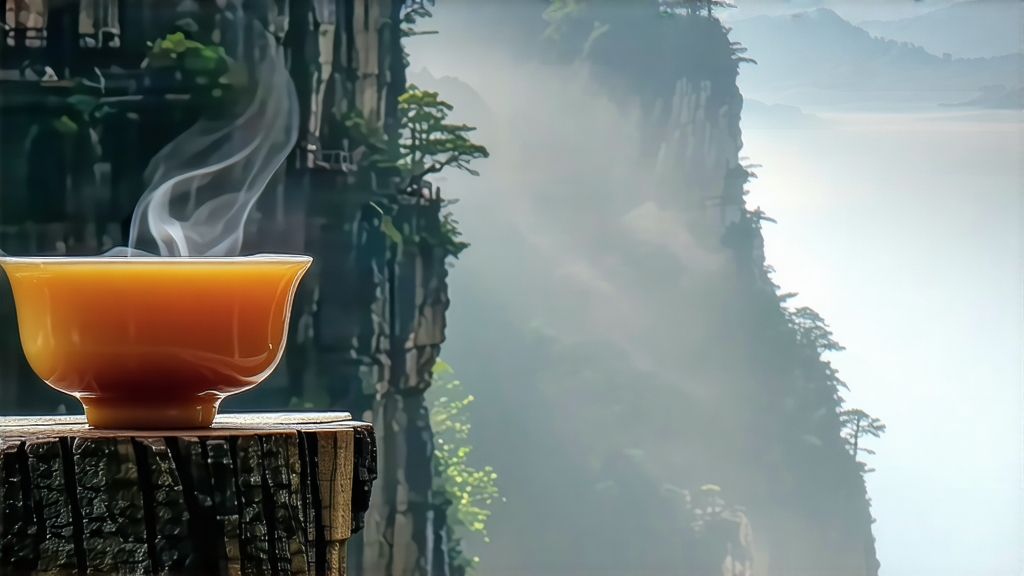
High in the mist-cradled Wuyi Mountains of northern Fujian, a tea has been whispering its story for more than two centuries. Locals call it Shui Xian—“Narcissus” in English—because the lingering aroma is said to mirror the sweet perfume of the narcissus flower that once bloomed beside the well where the first mother bush took root. To the global tea traveler, Shui Xian is the most approachable yet profound representative of Wuyi yancha, the “rock oolongs” grown in narrow strips of mineral soil squeezed between sheer cliffs and the winding Nine-Bend River. This essay invites you into that world: its legends, cultivars, craft, and the quiet ritual that turns crinkled charcoal-black leaves into a cup of liquid mountain.
-
From myth to market: a short history
The tale begins around 1821, when a Qing-dynasty scholar fleeing plague stumbled into the Wuyi gorge known as Huiyuan Yan. Thirsty, he chewed a wild tea leaf, felt his fever lift, and transplanted the shrub to his garden in Jianyang. The cutting survived, flourished, and was later returned to the core Wuyi scenic reserve by tea monks who noticed its unusually broad, jade-green leaves and honeyed fragrance. By the late 19th century Shui Xian had eclipsed the earlier Songluo and Tie Luo Han varieties in export volume, filling the holds of clipper ships bound for San Francisco and London. Today it accounts for roughly 40 % of authentic Wuyi cliff production, a share that rises every time a new cohort of drinkers discovers its balance of power and grace. -
The cultivar family: big tree, small garden
Shui Xian is both a single cultivar and a style. The original “Big Shui Xian” (Shuixian Qunti) is a tall, small-leaf tree that can reach five metres if allowed to grow unpruned; its descendants are grafted onto shorter trunks for easier plucking. Within the protected 60 km² UNESCO site you will meet:- Zhengyan Shui Xian: grown inside the officially demarcated “true cliff” zone where volcanic tuff meets running water, giving the sharpest mineral bite.
- Banyan Shui Xian: from the semi-shaded foothills just outside the core, softer and creamier.
- Zhoucha Shui Xian: planted on alluvial terraces along the river, lighter, more floral, half the price yet still unmistakably “rocky”.
Each zone carries a unique microbiome; scientists have isolated 38 species of rock-dwelling yeast that appear nowhere else on earth and are thought to inoculate the leaf surface during withering.
-
Craft: the four pillars of rock oolong
a) Picking: three to four open leaves with a strong, reddish petiole, ideally in the brief 48-hour window after the Grain Rain when spring mountain mists lift before noon.
b) Yaoqing: the “rock shaking” bruising unique to Wuyi. Leaves are tossed in 1.2 m diameter bamboo drums rotating at 18 rpm for 8–12 cycles; cell walls fracture just enough to liberate enzymes without overheating.
c) Charcoal baking: the soul of Shui Xian. Using only local hardwoods (primarily longan and peach), the tea master maintains a pyramid of glowing embers at 80 °C for the first bake, 60 °C for the second, and 45 °C for the third, each lasting 6–10 h and spaced 25 days apart. Between bakes the leaves sleep in unglazed clay urns so that residual moisture migrates outward. A traditional “full fire” Shui Xian may see 36 hours of total charcoal contact, transforming green floral precursors into roasted nut, cacao, and incense notes while preserving a living core of nectar.
d) Resting: minimum 90 days of “tuohuo” (fire retreat) before sale, allowing volatile phenols to settle and the famous “rock rhyme” (yan yun) to emerge—a tactile after-impression of wet stone and cool cave air that arrives minutes after you swallow. -
Tasting map: what to expect in the cup
First infusion (10 s, 95 °C): bright